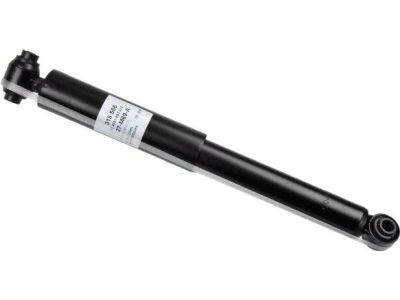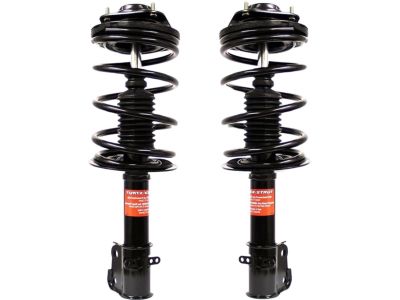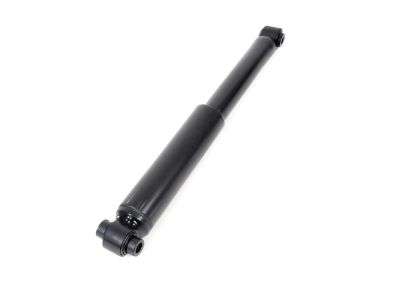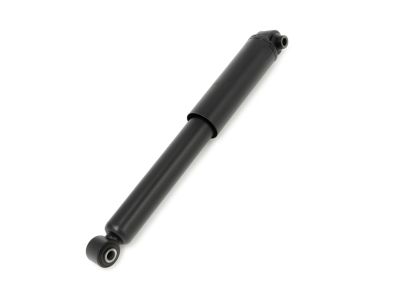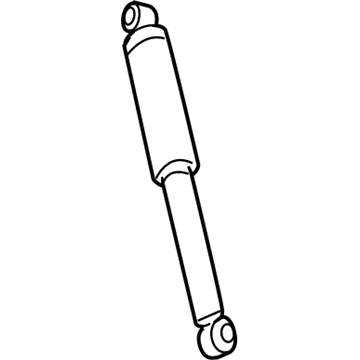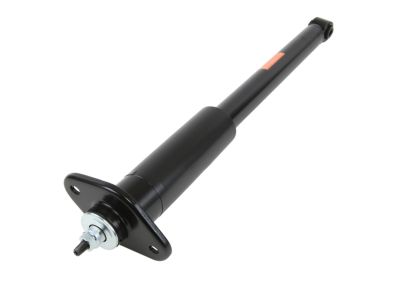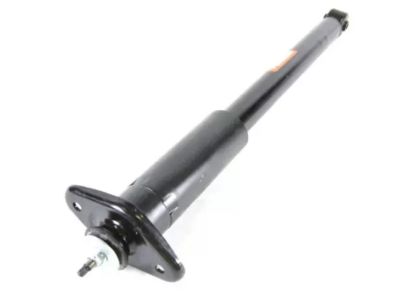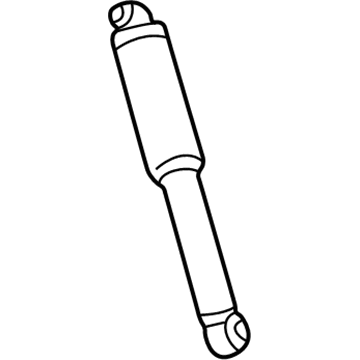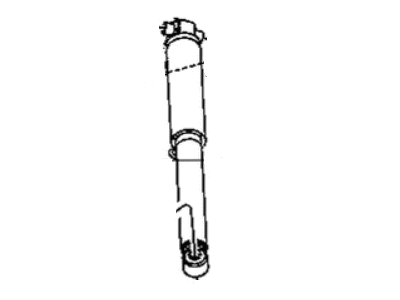
My Garage
My Account
Cart
Genuine Chrysler PT Cruiser Shock Absorber
Suspension Shock Absorber- Select Vehicle by Model
- Select Vehicle by VIN
Select Vehicle by Model
orMake
Model
Year
Select Vehicle by VIN
For the most accurate results, select vehicle by your VIN (Vehicle Identification Number).
25 Shock Absorbers found

Chrysler PT Cruiser ABSORBER-Suspension
Part Number: 4656439AF$102.15 MSRP: $153.00You Save: $50.85 (34%)
Chrysler PT Cruiser ABSORBER-Suspension
Part Number: 4656439AH$107.05 MSRP: $153.00You Save: $45.95 (31%)
Chrysler PT Cruiser ABSORBER-Suspension
Part Number: 4656678AI$71.10 MSRP: $159.00You Save: $87.90 (56%)Chrysler PT Cruiser ABSORBER-Suspension
Part Number: 4656678AG$71.10 MSRP: $159.00You Save: $87.90 (56%)Chrysler PT Cruiser ABSORBER-Suspension
Part Number: 4656678AH$71.10 MSRP: $159.00You Save: $87.90 (56%)Chrysler PT Cruiser ABSORBER-Suspension
Part Number: 5105115AB$85.95 MSRP: $129.00You Save: $43.05 (34%)Chrysler PT Cruiser ABSORBER-Suspension
Part Number: 5105115AC$77.80 MSRP: $129.00You Save: $51.20 (40%)Chrysler PT Cruiser ABSORBER-Suspension
Part Number: 4656612AH$68.68 MSRP: $102.00You Save: $33.32 (33%)Chrysler PT Cruiser ABSORBER-Suspension
Part Number: 4656612AG$68.68 MSRP: $102.00You Save: $33.32 (33%)Chrysler PT Cruiser ABSORBER-Suspension
Part Number: 5105114AB$99.06 MSRP: $148.00You Save: $48.94 (34%)Chrysler PT Cruiser ABSORBER-Suspension
Part Number: 4656439AG$102.15 MSRP: $153.00You Save: $50.85 (34%)Chrysler PT Cruiser ABSORBER-Suspension
Part Number: 5085324AB$67.51 MSRP: $99.75You Save: $32.24 (33%)
| Page 1 of 2 |Next >
1-20 of 25 Results
Chrysler PT Cruiser Shock Absorber
A Shock Absorber is an important component of Chrysler PT Cruiser vehicles that is used in the suspension system of a car, together with struts. These mechanical or hydraulic devices take shocks impulses, kinetic energy and transform it all into heat to enhance ride quality and control. For instance, Chrysler PT Cruiser Shock Absorbers have developed from twin tube shocks to mono tube ones due to the enhancement of performance as well as durability. Special features such asp-Position Sensitive Damping (PSD) and Acceleration Sensitive Damping (ASD) takes the Shock Absorber to new levels of tune, making it even more apt for the roads it is designed to traverse.
Looking for affordable and high-quality auto parts? Then you have already arrived at the proper online shop. We offer all Chrysler PT Cruiser Shock Absorber at great affordable prices. Moreover, all genuine Chrysler PT Cruiser Shock Absorber come with a manufacturer's warranty. In the long run, you would realize you have saved a lot of trouble and money with OEM parts from here.
Chrysler PT Cruiser Shock Absorber Parts Questions & Experts Answers
- Q: How to Replace Rear Shock Absorbers on a Chrysler PT Cruiser?A:Loosen the rear wheel lug nuts and chock the front wheels and remove the rear wheels. Support the rear axle with a floor jack and remove the shock absorber lower mounting bolt/nut and the shock absorber upper mounting nut and bolt. To install, reverse the removal procedure and tighten the upper and lower mounting bolts/nuts.
- Q: How to Disassemble and Reassemble a Strut and Spring Assembly on Chrysler PT Cruiser?A:You'll need a spring compressor for this procedure. Spring compressors are available on a daily rental basis at most auto parts stores or equipment yards. If the struts or coil springs exhibit signs of wear such as leaking fluid, loss of damping capability, or chipped, sagging, or cracked coil springs, explore all options before beginning any work. The strut/coil spring assemblies are not serviceable and must be replaced if a problem develops. However, strut assemblies complete with springs may be available on an exchange basis, which eliminates much time and work. Whichever route you choose to take, check on the cost and availability of parts before disassembling your vehicle. To disassemble, remove the strut and spring assembly. Mount the strut clevis bracket portion of the strut assembly in a vise, being careful not to clamp any other portion of the strut assembly. Install the spring compressor on the spring and compress it sufficiently to relieve all pressure from the upper spring seat. While holding the damper shaft from turning, loosen the shaft nut with a socket. Remove the nut and suspension support, inspecting the bearing and rubber portion for any issues. Remove the upper spring seat and dust boot from the damper shaft, as well as the rubber bumper. Carefully lift the compressed spring from the assembly and set it in a safe place, making sure to mark it for reinstallation. To reassemble, extend the damper rod and install the rubber bumper. Position the coil spring with the smaller coils going on first and carefully place it onto the damper shaft. Install the rubber bumper and push it all the way down. Install the upper spring seat and dust boot onto the damper shaft. Install the suspension support, aligning the support notch with the clevis bracket on the strut support. Install the nut and tighten it to the specified torque. Loosen the coil spring compressor(s) until the top coil is properly seated against the upper spring seat and suspension support. Relieve all tension from the spring compressor(s) and remove them from the coil spring. Finally, install the strut/spring assembly.
- Q: How to Install a Strut Assembly on a Chrysler PT Cruiser?A:Loosen the front wheel lug nuts. Raise the vehicle and support it securely on jackstands. Remove the front wheels. If both strut assemblies are going to be removed, mark the assemblies Right and Left so they will be reinstalled on the correct side. Mark the position of the strut to the Steering Knuckle. This is only necessary if special camber adjusting bolts have been installed in place of the regular strut-to-knuckle bolts. Remove the bolt and disconnect the ground strap from the strut. On ABS equipped models, also remove the bolt securing the speed sensor harness to the strut. Remove the strut-to-steering knuckle nuts and bolts. Remove the upper mounting nuts, disengage the strut from the steering knuckle and detach it from the vehicle. Inspect the strut body for leaking fluid, dents, damage and corrosion. Check the spring for nicks, chips or cracks in the spring coating. If the strut or coil spring is damaged. To install the strut, place it in position with the studs extending up through the strut tower. Install the nuts and tighten them to the torque. Attach the strut to the steering knuckle, then insert the strut-to-steering knuckle bolts. If equipped with special camber adjusting bolts, align the marks you made in Step Hold the bolts and tighten the nuts to the torque listed in the Specifications. Attach the ground strap and, if equipped, the ABS sensor harness bracket to the strut and tighten the bolt(s) securely. Install the wheel and lug nuts and lower the vehicle. Tighten the lug nuts to the torque. If special camber adjusting bolts have been installed sometime in the past, have the front end alignment checked and, if necessary, adjusted.
